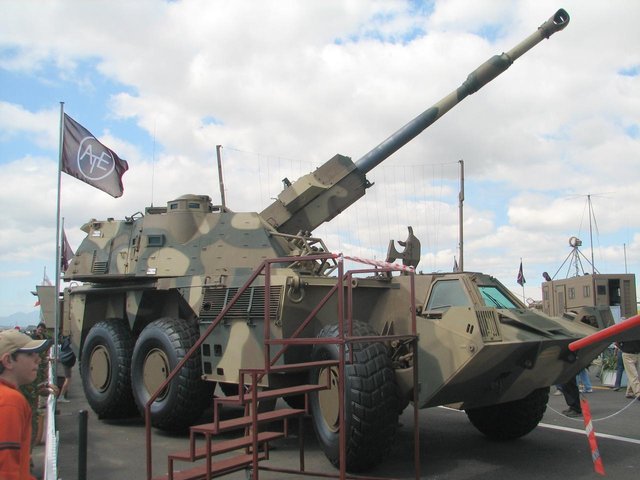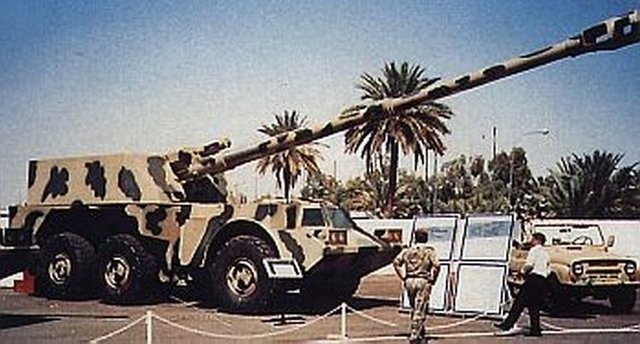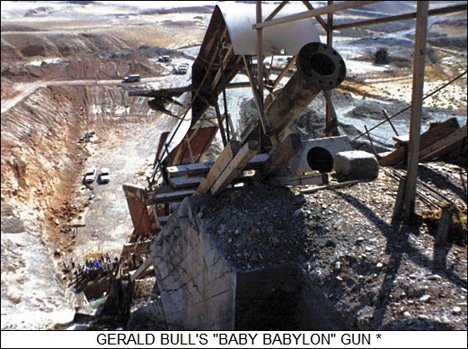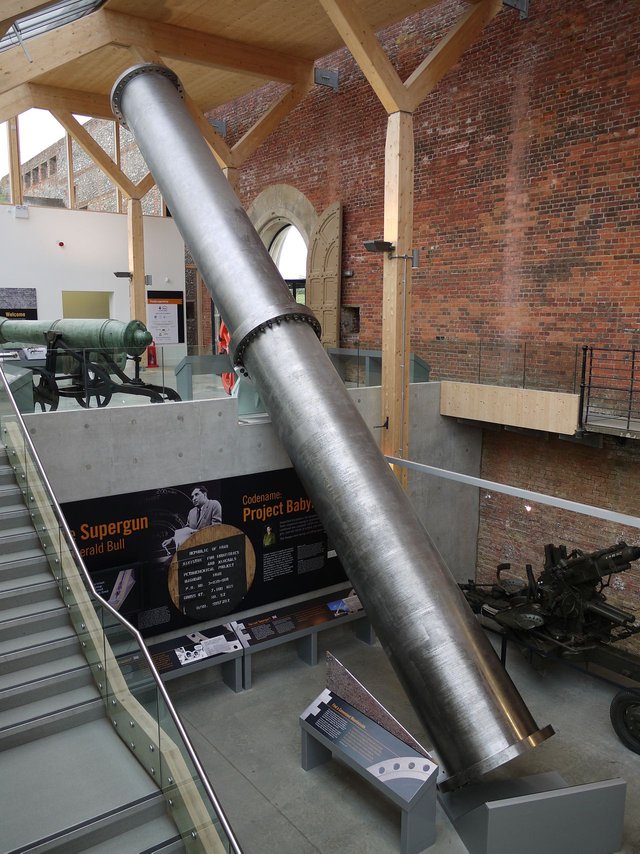Project Babylon: Saddam's Super Cannon
High Altitude Research Project (HARP) and the equipment developed, derived from the funds, to support high altitude testings is the basis for Saddam's Super Cannon.
Gerald Bull was a lead ballistics engineer but like all genius brought controversy mainly when he was willing to work with less than liked countries around the world, South Africa and Iraq, when the money ran out by Western governments to fund his super-cannon designs. Bull turned to consulting individually, with research and development of self-propelled artillery pieces as a focus.

South Africa's G6 howitzer

Iraq's 210mm Al-Fao (One of the largest SP guns in the world)
Bull is likely to have sought these types of contracts to fund his desire for an economic delivery device for sending satellitess into space. The problem he faced, almost all space delivery options are capable of weaponization. He would be murdered likely by Israeli agents.
Bull never saw the completion of his most massive designs. Capable of being trained elevated, the Very Large Cannon would have been capable of sending projectiles from Iraq to Israel. This is likely what drew the attention of Masad agents. A delivery system capable of carrying nuclear, chemical, biological and convention warheads was not an option the Israelis were willing to accept.
Two designs reached the construction phase at the time of Bull's death.
From Wikipedia:
Baby Babylon reached testing

The first of these superguns, "Baby Babylon", was a horizontally mounted device which was simply a prototype for test purposes. It had a bore of 350 mm (13.8 inches), and a barrel length of 46 meters (151 feet), and weighed some 102 tonnes. After conducting tests with lead projectiles, this gun was set up on a hillside at a 45-degree angle. It was expected to achieve a range of 750 km. Although its mass was similar to some World War II German "superguns", it was not designed to be a mobile weapon and therefore it was not considered a security risk by Israel.
Big Babylon was under construction
The second supergun, "Big Babylon", of which a pair were planned (one to be mounted horizontally, at least for test purposes), was much more substantial. The barrel was to be 156 meters (512 feet) long, with a bore of 1 meter (3.3 feet).[3] Originally intended to be suspended by cables from a steel framework, it would have been over 100 meters (300 feet) high at the tip. The complete device weighed about 2,100 tonnes (the barrel alone weighed 1,655 tons). It was a space gun intended to shoot projectiles into orbit, a theme of Bull's work since Project HARP. Neither of these devices could be elevated or trained, making them useless for direct military purposes, unless some form of terminal guidance could be used to direct the fired projectile onto its intended target.
It is possible that Big Babylon was intended both to launch satellites and to serve as a weapon, but its ability to fire conventional projectiles in the latter role would have been very limited: in addition to the impossibility of aiming it, it would have had a slow rate of fire, and its firing would have produced a very pronounced "signature" which would have revealed its location. Since it was immobile, it suffered from the same vulnerability as Germany's V-3 cannon, which the RAF readily destroyed in 1944. Also, Iraq already had Scud missiles which would have been far more effective than the outdated supergun technology. However, the gun would have offered greater ranges than the Scud variants then used by the Iraqis, and its projectiles would have been more difficult to intercept.

Have a nice day my friend.
@resteemator is a new bot casting votes for its followers. Follow @resteemator and vote this comment to increase your chance to be voted in the future!